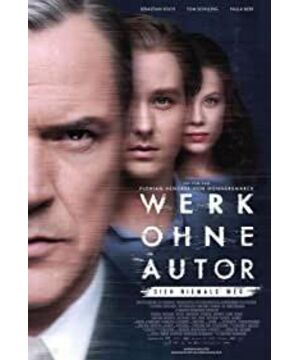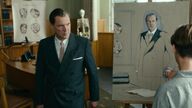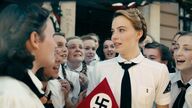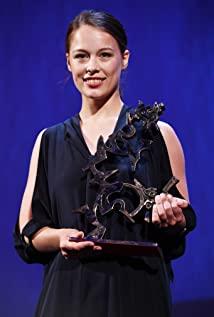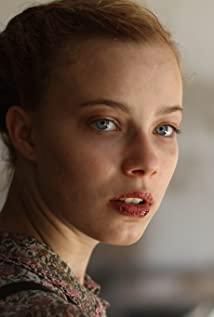Every Friday night is doomed to be physically and mentally exhausted, so I casually flipped through a not too famous movie to watch. I didn’t even know it had 189 minutes before watching it, and I didn’t even know which country and which director it was. What film. When I’m in a bad mood, I don’t usually see anything famous. Unexpectedly, I found a treasure by accident. As the 49th film I watched this year, I gave it the first rating, tied with “Roma” as my favorite in 2019. Film.
The length of the film of more than three hours is far beyond the normal level, but the whole film is not procrastinated at all, and the pacing is very good. On Friday night, I watched it at home for the first time in one go, without even glancing at my phone, the next morning. I took notes carefully and read it for the second time, and found that 189 minutes, the protagonist’s experience of more than 30 years, without a lengthy shot, every explanation is very clear (although some people will say that it lacks restraint and subtlety, but I think This is exactly the same attitude as the film conveys the director's thinking about art and the world, so there is no problem in letting the audience know exactly what the director wants to say, and in fact, relative to what the director wants to express, it can be expressed like this Clearly, I don't think it's easy anymore). If someone thinks it's lengthy, I can only say that, like some works of art, they are not created to be understood and accepted by everyone. It is enough for the artist to think clearly.”
1 theme
What I like most is the theme and title of the film. The translated title is also good. It is a work without a master. At the end of the film, it was explained at the press conference of the Kurt art exhibition, which means that Kurt denied the relationship with the characters in his paintings. He believes that it is because it has nothing to do with the characters in the painting that "truth, harmony and sincerity" can be better expressed, and "truth is harmony". And this is precisely the director's cognition and attitude towards modern art, even art and the world, as shown throughout the film.
The opening scene is a scene from blur to clear. Aunt Elizabeth took Kurt as a child to visit the decadent art exhibition. After zooming in from the blurred panorama, she took a close-up of the guide character with high sharpness, symbolizing the art world. At this time, we ushered in a historic change. In the picture is the guide who is arrogant, even with his back to the visitors to explain. The voice comes from the guide who represents the Nazis’ denial and criticism of modernism. , thinks that modern art is a random creation by a group of people with hereditary visual impairment, a waste of public money, and even a child like Kurt can draw it. But Auntie and Kurt watched with relish. Kandinsky, Montrian, Picasso, Bauhaus, and some native German avant-garde artists, Kurt was attracted by the empty and exaggerated eyes of Hoffman's sculptures, Aunt Elizabeth But in the denial of the tour guide, he said that he liked Kandinsky. The director began to discuss modern art from this point, but it seems that it is impossible to see where the director's attitude is. Don't worry, just follow. On the way home by Aunt Elizabeth and Kurt on the bus, Elizabeth stood in front of the bus stop driver again, begging to hear the drivers whistle and play music. In the limited space enclosed by the iron fence, Elizabeth listened to the drivers. The horn sounded, the whole gloomy and gloomy world was transformed, Elizabeth was intoxicated, and the real trumpet sound became the most harmonious sound in the world, as Elizabeth explained to Kurt in the first art class. "Draw a painting by feeling, this is what the artists are doing", this is a refutation of what the tour guide said in the previous exhibition, and it is also the first time that the director of the whole film has expressed his understanding of modern art and art. Knowing - feeling. Whether it is Nazi, socialism, or modern art, the most important thing is to express the true feeling and heart, and this is the most beautiful appearance of art. Aunt Elizabeth's most important artistic influence on Kurt is also the second cognition of art expressed by the director-truth, that is, "don't look away", what also exists is real, and what is real is beautiful. This includes both the beauty of Aunt Elizabeth leaving Kurt naked and playing the piano, and the cruel cruelty when Elizabeth was taken away by the Ministry of Health. Whether it is beautiful or cruel, as long as it is true, don't look away open, it deserves our attention. This also involves the out-of-focus lens used five times throughout the film, which will be discussed later when I talk about techniques and characters. The director's third perception of art is about his views on the artist, which is reflected in the two interpretations of Aunt Elizabeth. The first time was in Dr. Franz's clinic. Elizabeth saw Franz's family portrait, and the doctor in the photo Leave The wife and child were standing far away. Elizabeth said that the doctor couldn't stand his wife, and then the doctor was stabbed immediately. He became very angry and asked Elizabeth to go out. It was his inner world that he never wanted to see again. The second time was in the West Bend doctor's office. Elizabeth interpreted the doctor's daughter's painting and said that she could see that the doctor's daughter had no artistic talent, but because the doctor spoiled her daughter, the doctor himself was quite satisfied with it. Later facts have repeatedly shown that Ellie has no artistic talent. For example, when Kurt asked Ellie out for the first time, Ellie's topic could only be "What do you think of social modernism?" When Coulter said that Professor Seabender said Coulter's paintings were "Willicht style", Ellie actually answered "That's good, it means you are successful", and Coulter was dissatisfied with this. When she was about to leave, Ellie didn't know why, and there are better examples of this. These two completely correct interpretations undoubtedly show that a person who is considered to be mentally abnormal is more insightful and has the ability to know the reality of the world. What does this mean? This distorted world mistaken madness for art, Treat hypocrisy as sobriety. The fourth cognition is about the way of cognition of the world, which was shown in Kurt's epiphany to the world when he grew up in 1948. This is also the budding stage when the director wants to express modern art through Kurt's epiphany. The sun shines on the golden fields, the wind blows the waves, and Kurt climbs on the tree to examine and think about everything. The close-up view on the left of the composition at this moment is the tree, and the middle view on the right is the block of rice fields. The distant view is the rolling mountains, and the whole composition is very similar to the enlightenment of modern art - Cezanne's "Mont Saint-Victor". The rational structure and the author's own propositions are combined, because no matter from which angle the picture is viewed, it can be redirected by the center of gravity and composition of the picture, and the most real nature and all things in the world can be depicted on a two-dimensional plane to the greatest extent possible. contact. Undoubtedly, the director used this composition to express Kurt's epiphany incisively and vividly, and then the camera slowly fell as Kurt climbed down the tree, as if the truth was forever detached from the world, and then when Kurt reported the news to his father , The dialogue of the characters deliberately reminds everyone of Elizabeth, who is characterized as mentally ill, but all the shots of Kurt are taken at a slight elevation, and the director agrees with Kurt's cognition. The fifth perception is about ideology. When Seabender was awarded the humanitarian award, he said that he was actually the same as these painters who painted very flattering portraits. One wheel in front, at which point the camera cuts to Kurt's portrait of West Bend, and then to Kurt embarrassed enough to light a cigarette. What the director wants to express here is actually an irony, showing that art, as a form of superstructure expression, is actually extremely ideological, whether it is the introduction of the Nazi art tendencies by the gallery guides at the beginning of the film, or the East Germany's influence on society The respect of modernism, or the most respected of freedom in West Germany, at the end remember to avoid nude women and portraits of Nazi officers when reporting on Kurt's paintings. This avoidance itself is a choice, an ideological Performance. And what is real art, the professors at the Düsseldorf Art Academy all explained, "Who should choose between the two factions? Choose art", and then burnt the posters of the two factions, (in the raging fire The image of the professor in the middle is simply handsome), "Artists want to be priests. In the post-war society, only artists can reconstruct people's inner world, and only when they can truly liberate themselves to understand the world can they gain freedom." The sixth Cognition is not only about the artist's own awareness and growth, but also about the development of art history itself. The growth of an artist depends on talent, luck, and thinking, and the development of art is contingent. It is divided into three stages. The first stage is enlightenment, and it has been mentioned in the fourth cognition. The second stage of thinking, after Kurt painted the portrait of West Bend, Kurt said why he couldn't keep up with the reality of a stupid photo taken at random, no one liked his photo, but everyone liked it My own portrait, but obviously the photo is more real than the painting. The third stage is the epiphany. Like the first stage of enlightenment, there was a sudden wind outside the painting room, which blew the huge window and kept turning on the switch. The ID photo of West Bend was also projected on the photo of the mother and son, thus giving birth to the whole world. My favorite painting in the film - "No Master's Work", on the upper left corner of the screen is the murderer Kroll, in the lower right corner is West Bend, and in the middle are the victims of these two people, Aunt Elizabeth and Kurt, who seem to be The three parts are unconnected, but the audience from God's perspective (which Seabender can't clearly infer) understands that these four people are inextricably inextricably linked, just like everything in the world. (The image of the professor in the middle of the burning fire is so handsome), "The artist wants to be a priest. In the post-war society, only the artist can reconstruct people's inner world, and only when he can truly liberate himself to understand the world can he achieve Freedom." The sixth cognition is not only about the artist's own awareness and growth, but also about the development of art history itself. The growth of an artist depends on talent, luck, and thinking, and the development of art is contingent. It is divided into three stages. The first stage is enlightenment, and it has been mentioned in the fourth cognition. The second stage of thinking, after Kurt painted the portrait of West Bend, Kurt said why he couldn't keep up with the reality of a stupid photo taken at random, no one liked his photo, but everyone liked it My own portrait, but obviously the photo is more real than the painting. The third stage is the epiphany. Like the first stage of enlightenment, there was a sudden wind outside the painting room, which blew the huge window and kept turning on the switch. The ID photo of West Bend was also projected on the photo of the mother and son, thus giving birth to the whole world. My favorite painting in the film - "No Master's Work", on the upper left corner of the screen is the murderer Kroll, in the lower right corner is West Bend, and in the middle are the victims of these two people, Aunt Elizabeth and Kurt, who seem to be The three parts are unconnected, but the audience from God's perspective (which Seabender can't clearly infer) understands that these four people are inextricably inextricably linked, just like everything in the world.
As Coulter's lottery theory says, a string of numbers that was originally innocuous, when announced as a lottery number, immediately became real, meaningful, and even aesthetically pleasing; some Family photos that are so real that no one likes them become art when they are inadvertently drawn together; people and things that seem unrelated in reality are secretly closely connected, when the viewer as God's perspective sees everything (this When the characters in the film do not know it), the world of irony becomes real, harmonious and memorable. The director explained the development of modern art and the truth of all things in the world with short stories of ordinary people. In this sense, the Berlin Film Festival was banned because the director did not clearly show his consistent attitude towards World War II. It can be said that such a narrow vision cannot appreciate the wonderfulness of this film.
2 Audiovisual language
There is a theory of film criticism that it is not the theme that matters in the film, but how the theme is expressed, and this film is really suitable. There are no fancy gimmicks and dazzling skills, just using colors, shots, editing, sound, and symbols to convey all the information you want to express.
Let’s talk about color first, because it is already obvious that even the audience can perceive it. There are five cool-tone treatments in the whole film. The first one is when Aunt Elizabeth takes Kurt home from Redston. After getting off the bus in the evening, the entire color tone is extremely cold. I think it is on the one hand to symbolize the society at that time. On the other hand, it is also in order to form a sharp contrast with the art world where Aunt Elizabeth can still perform in such an environment where the bus driver whistles and plays music. The second is that in the disinfection room, Elizabeth was the last to walk into the disinfection room. She seemed so calm, just like the cold tones around her, that the audience couldn't help but feel that she had already predicted everything since she was sterilized. Although the companion who was going to be disinfected with Elizabeth was not in a normal state, it was so sincere to tell the nurse that I like you before she died, but although the nurse also responded that I like you too, it was so perfunctory and false, which made it even more prominent. The disgust of an icy world. The third place is when the plane bombed Dresden, and the aluminum foil that blocked the radio signal floated down like snowflakes. The saddest piece of music was played, and the camera shot from the raging fire in Redston in the distance, faded into the scene of Kurt's little friend Johanna's house being burned, one ice and one fire formed the biggest visual impact on the audience's psychology. . The fourth place is the first time that Kurt and Ellie rolled the sheets and were caught by West Bend. In the cold background, West Bend came in and blew out the only warm color in the whole space - Ellie's bedside candle, It also foreshadows West Bend's future obstruction of Kurt and Ellie's relationship. The fifth place is that West Bend lied to Kurd, excused that Ellie had a physical problem and therefore needed to terminate her pregnancy. Ellie walked forward under the cold night, which made the audience disgust that West Bend did not even let go of her own daughter, I also feel pity for Ellie's tragic experience. The sixth is when Ellie had a miscarriage, the color tone was cold, and under the cold and weak moonlight, Kurt and Ellie cried together, making them seem so helpless and insignificant. The seventh and last place, Kurt passed by the bus stop after his first exhibition, hesitated for a moment, walked down the stairs, and like Aunt Elizabeth, walked into a closed place surrounded by iron fences. , let the bus driver listen to the whistle and play music for him, just like at the beginning, although it is still a cold society and a world that only he can understand, but Kurt has been transformed, and he is as intoxicated in the real world as Elizabeth. , showing the most charming and warm smile.
As for the camera, aside from color, the use of focus is probably the second most obvious artistic technique in the film. The director uses the out-of-focus of the camera to express Kurt's intentionally blurred vision every time he encounters painful events. The first time is probably the least obvious one, the blurry shot at the beginning of the whole film, which was already mentioned in the first cognition of the theme, so I won't repeat it here. The second and most obvious time, when Aunt Elizabeth was taken away by the Ministry of Health, it was probably out of the child's instinct to escape the pain in her heart. Kurt kept raising his hand in front of his eyes, blurring the world in front of him. . But Elizabeth said "don't look away", so Kurt broke free when his mother covered his eyes, and even if his vision was blurred, he didn't want to be blinded so that at the end the car disappeared around the corner, Kurt Being carried into the room, his eyes did not take his eyes off the corner. The third time is
The whole family went to see Aunt Elizabeth, but was told that she had been transferred away. Kurt, the nurses who acted as Nazi accomplices, did not want to see it, so like a photographer, he raised his right hand, blurring the world for the second time, rejecting cruelty . The fourth time was when Kurt saw his father hang himself, but this was also the only time that the focus became clear after blurring. Maybe this was the first misfortune that Kurt encountered when he grew up. He wanted to try to grow. Big, try to face it, and try to "don't look away". The fifth and last time, it was West Bend who performed the abortion operation on Ellie at home. Kurt repeatedly asked if West Bend had no other choice. The front and back shots showed the contradiction and opposition between Kurt and West Bend. Aggressive, forcing Kurt to retreat and exit the door. At this time, the camera kept a slight elevation to shoot West Bend. Because most of Kurt's image was in the dark, he seemed extremely helpless and desperate. At this time, the camera moved forward. The sound of the collision of medical equipment came from the door of the surgery room, and the picture became blurred for the last time. All these blurred and painful scenes became the source of inspiration for the final art creation of Kurt, why all his paintings are black and white and gray, because memory is cold, why all the drawings are so detailed Yes, because the memory is deep, why all the paintings end up being blurred, because the memory is painful.
Then there are clips. As mentioned at the beginning, the rhythm of this film is so smooth, precisely because of the exquisite editing. There are too many examples, the first treatment is to use the editing to form a sharp transitional contrast, such as after West Bend helped Ellie perform the abortion, the camera gave a god perspective, Ellie crying in bed depicting the Nazi image of West Bend , said that the doctor was stupid and should save people, but she lost her child because of her father's concept of racial genes. Ellie also began to doubt whether she should get rid of her father's control for the first time. The noise is canceled first, and the camera cuts to the humanitarian award to West Bend. The contrast is too strong. The second is to use editing to form a succession. When the professor of the Düsseldorf Art Academy recalled the past to Kurt, the camera cut from Kurt's close-up to the scene of the plane crash, and then cut back to Kurt after the memory was over. Close-up, the director used this clip to illustrate what kind of thoughts and feelings the professor was passing on to Kurt, and Kurt felt the same way. These memories are not just dry one-sided memories of the professor himself. An inheritance of artistic perception. The third is to use clips to form a before-and-after contrast. The most obvious is in the West Bend office, first the preoperative conversation about Elizabeth being sterilized, and then Kurt came to paint West Bend's portrait, the clock, the table edge, the painting of West Bend's daughter, and the corner of the wall, the director edited a Once explained, the audience kept finding the shadow of Elizabeth in Kurt.
And there's the sound. The director used a lot of special sound processing, such as the above-mentioned sound when editing, so that the audience can naturally accept the transition of the editing. In addition, the director is particularly good at using the pause and breath of the voice to create a sense of psychological tension. For example, Kurt and Ellie rolled the sheets, the Seabenders came back suddenly, Kurt jumped from a tree and was hit by Ellie's mother, the music stopped abruptly when the two looked at each other, and Ellie's mother took the initiative The shoes are handed out, the deadlock is broken, and the music starts again. In addition, because there is a lot of need to show that Elizabeth and Kurt are immersed in their own art world, the director uses the difference in distance brought by the sound to create the isolation of the spatial relationship and the alienation of the relationship between the characters. . For example, after Elizabeth was inspected by the head of state and presented flowers to the head of state, Elizabeth had been immersed in her own delusional joy and couldn't extricate herself, so when the surrounding classmates surrounded Elizabeth with envy and wanted to ask her about her feelings, the director made the surrounding noises The ethereal de-escalation gives Elizabeth's crowded space for one's own mind.
The last thing I want to mention is intention. The most obvious skeleton. On the West Bend cap, the skeleton in the West Bend office, Kurt's portrait of West Bend, the sterilization room officer's ring, Kurt's paintings when he was working in the advertising factory, all these skulls are intended to convey cruelty and pain.
3 characters
I can't write this at all, but there are a few sentences I want to mention about the characters' impressions. If I say that I like "Roma" because there are no shortcomings, some of the advantages are too prominent. Then I like this film because at my level, it is really difficult to find out what makes me feel bad. (There seems to be only one now, I'll leave it to the end.) In addition to the expression of the theme, the control of the audio-visual language, and the shaping of the characters, I think it is remarkable. The most noteworthy is undoubtedly West Bend. He never forgets to emphasize his title of Professor of West Bend, to be beaten during an interrogation, and to smooth out his shiny and meticulous hair, and his deep-rooted racist views (the first time he met Kurt, he said he had facial nerve numbness) ), as well as a neurotic occupational sensibility (he could hear the cry of the major’s wife in labor, and the signs of her own daughter’s pregnancy).
For 6 hours, I couldn't write it anymore, and finally I wrote the only part of the whole film that I didn't understand. At the end of the film, when Kurt has an epiphany, why do three of his art school friends suddenly show up to help him wash the floors in the gynecology clinic together. It's understandable that the director wanted to show everything Kurt had changed, but the abruptness of this arrangement was a bit incomprehensible. In addition, it is really a good movie. Although it seems that foreign media have mixed reviews, it does not affect my love at all.
View more about Never Look Away reviews


